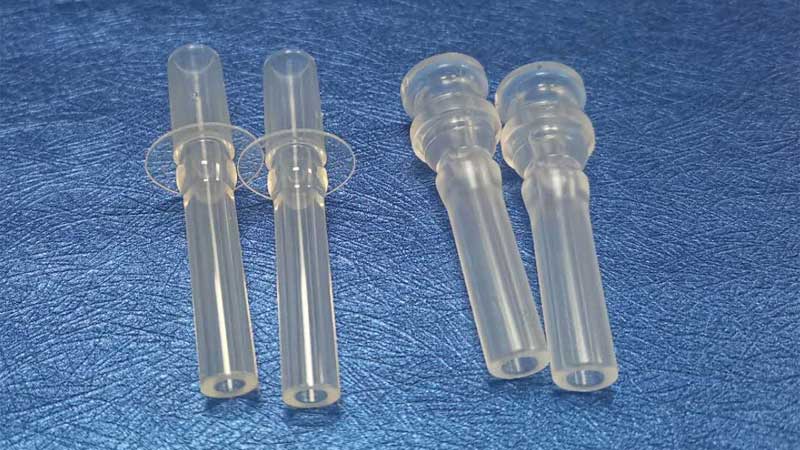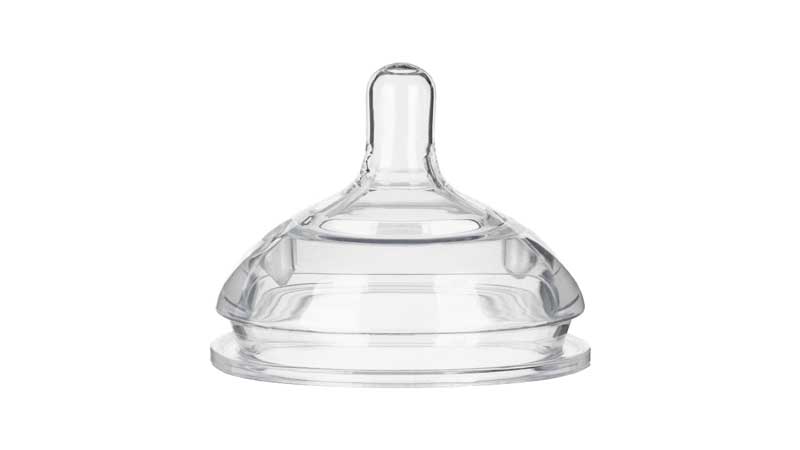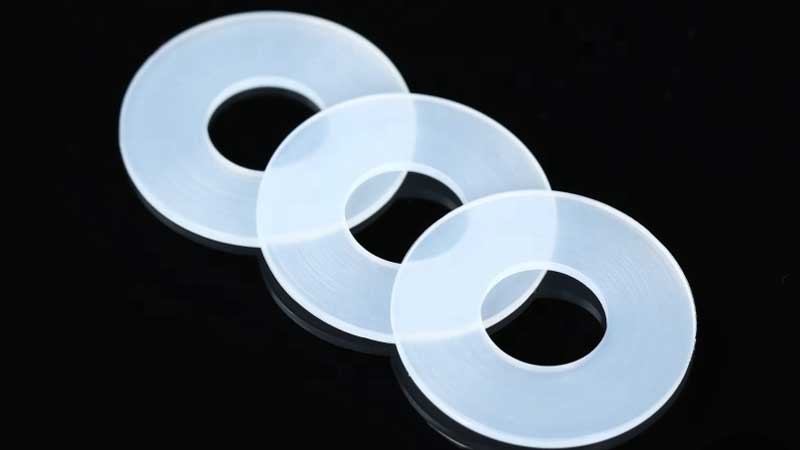Transparency is not just about appearance. It is also a functional need. Transparent silicone allows users to clearly see fluids, impurities, or light transmission. This makes it highly valuable in the medical and food industries.
This article provides a clear overview of how transparent silicone products are manufactured.

What Determines the Transparency of Silicone?
Whether silicone appears transparent depends on the uniformity of its internal structure and how its ingredients scatter light. The key lies in molecular-level control. Even tiny inconsistencies, impurities, or air bubbles can change how light travels through the material, leading to a cloudy or semi-transparent look.
Achieving high transparency requires precise balance among material selection, curing system, and processing conditions. The table below summarizes the main factors that affect silicone transparency and how they work.
| Factor | Key Mechanism | Effect on Transparency |
| Type and Particle Size of Filler | Fumed silica has finer and more uniform particles | Reduces light scattering and increases clarity |
| Crosslink Density | Excessive crosslinking creates uneven network structures | Causes light scattering and lowers transparency |
| Formulation Purity | Impurities, metal ions, or volatiles absorb light | Leads to cloudiness or whitening |
| Curing System | Platinum-catalyzed systems are cleaner. Peroxide systems produce more by-products | Platinum systems provide better transparency |
| Processing Conditions | Mixing speed, temperature control, and degassing | Improper handling can trap bubbles or particles, reducing optical performance |
What Factors Affect the Transparency of Clear Silicone?
Even when silicone is made with a transparent formulation, its final clarity depends on how well the material is processed and controlled during production.
Filler Dispersion
Clear silicone usually uses fumed silica as a reinforcing filler. If the silica is not evenly dispersed during mixing, tiny agglomerates may form. These clusters scatter light and reduce light transmission, making the material appear cloudy.
In industry, vacuum kneading and high-shear mixing are often used to improve dispersion and achieve better clarity.
Moisture and Bubble Control
Air or moisture trapped inside the silicone is a common reason for poor transparency. If degassing is incomplete before mixing or injection, bubbles can remain inside the cured product. These bubbles scatter light, giving the silicone a whitish or hazy look.
To avoid this, vacuum degassing should be carried out before molding to ensure a bubble-free system.

Temperature and Curing Conditions
Curing temperature and time directly affect crosslink uniformity. Low temperatures or short curing times can lead to uneven crosslink density, causing micro-phase differences that scatter light. Excessive heat can cause yellowing or decomposition.
Precise control of heating profiles and curing cycles helps maintain consistent transparency.
Mold Surface Finish
The smoothness of the mold surface also plays an important role. Rough textures or scratches on the mold can transfer to the product surface, creating tiny irregularities that diffuse light.
Using a mirror-polished mold greatly improves surface smoothness and enhances light transmission, giving the silicone a clearer appearance.
Post-Curing Process
After vulcanization, clear silicone often undergoes post-curing to remove residual catalysts, low-molecular siloxanes, or volatile compounds. Without proper post-curing, these residues can oxidize or migrate to the surface over time, causing yellowing or haze.
A post-cure process at around 200°C for a sufficient duration helps achieve better optical purity and long-term stability.

How Are Clear Silicone Products Molded?
The molding process of clear silicone directly affects optical clarity, dimensional accuracy, and surface finish. Depending on the product type and production volume, the most common methods are Liquid Injection Molding (LIM) and Compression Molding. Each method has its unique advantages and critical control points.
Liquid Injection Molding (LIM)
Liquid Silicone Rubber (LSR) is usually supplied as two parts, A and B. After precise weighing and mixing, it is injected under high pressure into a heated mold, where it rapidly cures.
Advantages:
- Highly automated, ideal for large-scale production
- Excellent dimensional precision
- Capable of producing thin walls and complex geometries
- Short curing time improves efficiency.
Key Control Points:
- Accurate mixing ratio to prevent incomplete curing or uneven hardness.
- Uniform injection pressure to avoid bubbles or short shots.
- Precise mold temperature control to ensure uniform curing and high transparency.
Applications: Clear nipples, medical valves, optical lenses, and other small precision products for baby care.
Notes: Mold surfaces must be mirror-polished to ensure smooth, optically clear surfaces. Materials must be fully degassed before mixing and injection to prevent internal bubbles that reduce transparency.

Compression Molding
High-Consistency Rubber (HCR) is typically used for compression molding. Pre-mixed silicone is placed into the mold, then heated and pressed to cure.
Advantages:
- Suitable for medium-volume production or thick-walled products
- Provides good mechanical strength and heat resistance
- Can produce larger or complex-shaped transparent parts.
Key Control Points:
- Mold surfaces must be mirror-polished to minimize surface light scattering and maintain high transparency.
- Temperature uniformity and pressure application must be strictly controlled to prevent uneven curing or microbubbles.
- Pre-formed silicone must be degassed to reduce trapped air that causes haze.
Applications: Clear sealing rings, observation windows, protective covers, and medium-thickness optical components.
Notes: Thick compression-molded parts may show differences in curing between inner and outer layers. Design should account for appropriate cooling or post-curing time.
Conclusion
The transparency of clear silicone depends on both material purity and precise process control, with every step influencing the final product quality.
If you are looking for a professional manufacturer of clear silicone products, we offer years of experience in silicone production and provide one-stop custom solutions for your projects. Contact us today and let our skilled technical team create the ideal clear silicone solution for you.